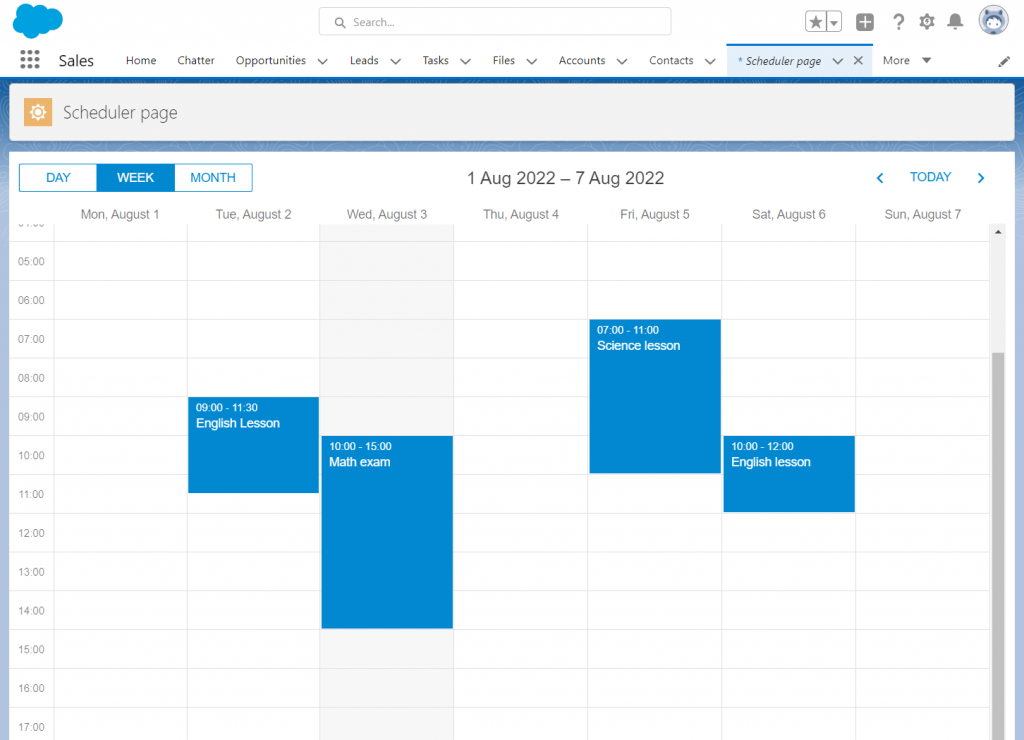Our development team continues working on various auxiliary resources that make it much easier for web developers to use DHTMLX products with other technologies. In recent months, we have been receiving a lot of inquiries on various questions related to the integration of our Gantt and Scheduler components into Salesforce apps. That is why we’ve intensified our efforts on preparing extra reference materials that will help developers to create their own Salesforce project management apps with the use of DHTMLX.
Let us have a look at the results of our work.
New Ways to Facilitate Integration of DHTMLX with Salesforce LWC
Before introducing new aids for delivering cloud-based project management apps, let us give you a little prehistory of our work on Salesforce integrations. Previously, we offered ready-to-use tutorials and samples for adding DHTMLX Gantt into Salesforce organizations based on Salesforce Lightning Aura or Visualforce frameworks.
With the appearance of the Lightning Web Components (LWC) programming model on the Salesforce platform at the end of 2018, web developers got an opportunity to build Salesforce apps using the latest web standards and newest JavaScript features. After becoming convinced of the LWC’s high potential, we decided to help Salesforce developers to take advantage of DHTMLX libraries in their projects.

We started with adapting to Salesforce our flagship product – DHTMLX Gantt. Our dev team prepared a GitHub demo of using the Gantt component with LWC and a step-by-step video guide on the matter. These materials enabled our customers to create a Salesforce Gantt chart faster and encouraged us to continue working in this direction.
Now we can proceed with the novelties.
First of all, we’ve incorporated a range of changes into the latest major update (v6.0) of the Scheduler component for making it compatible with LWC. You can find an example of such integration with the full source code on our GitHub repository.

As a cherry on top, there is a new guide in our documentation that gives clear instructions on how to initialize and configure your Salesforce Lightning Scheduler. The whole process takes 7 simple steps which are complemented with screenshots and helpful links. The tutorial also includes useful clarifications on application security and troubleshooting. Similar step-by-step guide is now also available in the documentation for DHTMLX Gantt.
Potential Issues with New Security Architecture in Salesforce LWC
Not long ago, Salesforce rolled out a new security architecture called Lightning Web Security designed to replace the Lightning Locker mechanism in LWC. Recently we’ve got several reports stating that the new security solution conflicts with our JavaScript libraries, which will likely require compatibility updates from our side.
Our team is planning to investigate the issue and, if necessary, prepare maintenance updates for Gantt and Scheduler components in order to provide compatibility with the new security model. If you’ve already experienced any issues related to Lightning Web Security, we would appreciate receiving more detailed information on your case. It will help us prioritize the work on required updates and inform you as soon as they’ll be finished.
What’s to Come
In addition to the above, our team puts the finishing touches to new video materials based on new guides in our documentation. They will clearly demonstrate how to create a modern project management application with LWC and DHTMLX components from start to end.
We also work on a new demo that will cover more advanced usage of DHTMLX Gantt in SalesForce. This demo will give an understanding of how the resource diagram can be added into Gantt. And more importantly, you will learn how to connect gantt resources and resource assignments to the Salesforce backend. The preview of this demo can be provided upon request.
Want to suggest other usage scenarios of DHTMLX components in Salesforce apps to be fully covered in our new demos? You can leave your ideas in the comments section.
Wrapping Up
Salesforce technologies are becoming increasingly popular among web developers and we closely follow this trend. We want to ensure that you can make the most of DHTMLX products with Salesforce. Therefore, we plan to continue working on useful resources for developers and consider expanding the list of DHTMLX products integrable into Salesforce projects in the future.